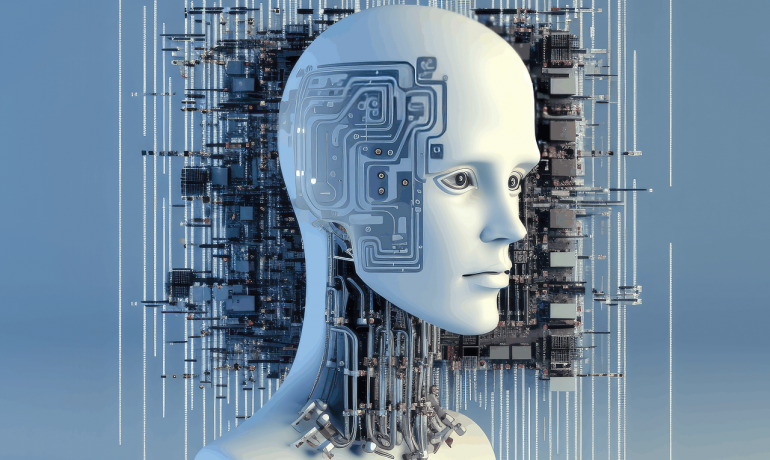Many of you will know that here at SAMI we are not overly sold on technology trends – no flying taxis for us. There is a tendency amongst those who analyse technology to see everything through that lens and ignore other PESTLE categories. Yet there are myriad examples where technological determinism not come about because of other confounding factors, or where in spite of technological limitations change has been driven forward regardless. We are far more aligned with the Gartner Hype Cycle, where innovations settle down from the “peak of inflated expectations” to finally find a niche and a “plateau of productivity”.
So it was with some pleasure that we picked up the Future Today Institute’s (FTI) 2024 Tech Trends report. For a start, it recognises that “In isolation, (tech) trends offer limited foresight into the future. Instead, the interplay of these trends is what reveals long-term change.”
Secondly, they recognise that technology will impact different sectors in different ways because other forces are at play. And thirdly, they highlight uncertainties in the development of the technologies and note the different timescales over which they will have an impact.
They also cover an impressive 12 major groupings of technologies, from near-term relevance of AI/IoT and Augmented Reality through biotechnology to long-term impacts of quantum. Over 700 trends are identified in all. The mapping the 12 groups against 20 application areas/industries makes the report more useable and real.
Sixteen technical/application areas are highlighted for more detailed description. I have picked out here ones I thought more unusual or surprising.
Bioengineering
I was struck by the claim that 2024 could be a breakthrough year for bioengineering. FTI regard it as a “general purpose technology, that has the potential to influence an entire economy and alter society through political, economic, and social structures.” The application of AI to bioengineering has the capability to bring rapid change, creating new molecules and drugs, and identifying new opportunities for CRISPR gene editing. This in turn could lead to a feedback loop where organoid intelligence enables brain cells to deliver major efficiency gains over traditional computer systems.
The FTI report recognises that wider societal forces will come into play as bioengineering advances. The potential for a backlash like the one that hit GMOs is very real; regulatory and ethical issues will slow development; high costs will create health divides that may be seen as unacceptable.
Energy and Climate Change
In the inevitable and unavoidable section on climate change, the various technology developments are explored. However, that this is one area where the other PESTLE categories are particularly important and even this tech-focussed report acknowledges this fact. Political and Legal actions are tightening regulation, extending it into new areas such as food production and pressing for more transparency on carbon emissions reporting. Wider considerations of impacts on eco-systems are coming into play. There is also the prospect of civil lawsuits against those whose actions (or inactions) cause loss and damage. Economic forces however may challenge the trend as there is less room or taste for increasing costs or funding investment. Socially, climate change action is becoming another dimension in polarised culture wars. Geo-political tensions also bring challenges in sourcing some of the enabling materials.
The FTI report suggests that the focus of attention now should be more on the supporting infrastructure rather than new sources of clean energy (a conclusion, incidentally, which our Sustainable Innovations Pathways project realised over a year ago). Investment in key areas such as transport and energy is moving to encompass industry processes and the built environment. Bottlenecks include transforming the grid for renewables (though recent announcements are starting to address this), developing large-scale batteries for wind and solar power storage and effective carbon capture and storage.
The report also explores developments around methane emissions, improved monitoring and forecasting in extreme weather conditions, and the “Blue Economy”. There are also informative sections on new solar and wind developments, other clean fuels such as hydrogen and bio-fuels, new nuclear and fusion, and wave and tidal power.
Mobility, Robotics and Drones
Despite the tech-focus of the report, there is an acknowledgement that fully autonomous vehicles on public roads are still some way off, and that the challenges are forcing some developers to pull out. General purpose humanoid robots are also unlikely to emerge anytime soon. Drones however do seem to be becoming more generally effective in an ever-wider range of applications.
The dominance of electric vehicles will create more challenges for the grid. Information, communication and entertainment systems within vehicles will leap forward improving the journey experience with, amongst other things, better traffic management.
But again, there are wider considerations. Geo-political tensions could cause supply chain problems, with “chip nationalism” a possibility. Drone traffic management will become a key regulatory issue. Robo-taxis will be subject to tight regulation. Advanced information systems bring with them concerns about privacy.
Other Areas
Whilst the 16 technical areas include many of the obvious computing developments around AI, Web3, the Metaverse and human/computer interaction, there are several which cover areas we would not usually cover.
These include:
- Developments in the built environment
- News and information
- Sports, hospitality and entertainment
- Space
- Financial services
Uncertainties
The report considers five areas of uncertainty and scenarios that might flow from them. The uncertainties themselves are more about how the technology might be applied – in other words how the other PESTLE factors might impinge. For example, there are challenges from geo-politics, issues around how people respond to their work environments, regulatory and commercial pressures due to climate change and how biotechnology drives “Better living”.
From these uncertainties the report paints a number of different future scenarios. Under “Better living” we could see a “Subscribe or die” scenario where reactively treating illnesses is replaced by prevention, with subscription to tailored health-promoting and anti-ageing bio-based services – without which you take your chances.
Discussion of the future “Blue Economy” brings out two contrasting scenarios: sustainable growth and innovation; or exploitation and environmental degradation. Similarly, regulations around environmental protection could bring holistic and sustainable benefits, or over-regulation, complexity and stagnation.
These could be useful start points for a more thorough scenario exercise.
In Conclusion
Each of the 16 focus areas has separate reports of some 60 pages long – the FTI report is a formidable piece of work, far beyond the normal consultancy annual tech-fest. Writing a summary such as this leaves out a vast amount of important information and interesting insights.
As well as the detailed descriptions and the uncertainties/scenarios described above, it also identifies which sectors are impacted in what timeframes, opportunities and threats and possible strategies for finding your way through the changing world.
THE FTI Tech Trends Report 2024 is clearly very useful. It would be an important and valuable input into most futures work.
Written by Huw Williams, SAMI Principal
The views expressed are those of the author(s) and not necessarily of SAMI Consulting.
Achieve more by understanding what the future may bring. We bring skills developed over thirty years of international and national projects to create actionable, transformative strategy. Futures, foresight and scenario planning to make robust decisions in uncertain times. Find out more at www.samiconsulting.co.uk.
If you enjoyed this blog from SAMI Consulting, the home of scenario planning, please sign up for our monthly newsletter at newreader@samiconsulting.co.uk and/or browse our website at https://www.samiconsulting.co.uk
Featured image (AI generated) by DIY Team from Pixabay.


